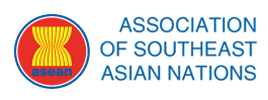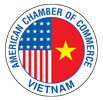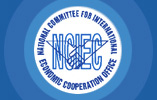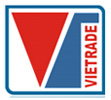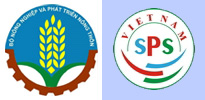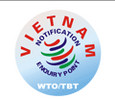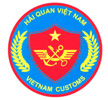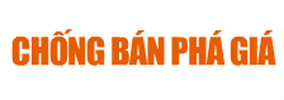
The Ministry of Finance has completed and submitted to the Government a draft of the Special Export Tariff and Preferential Tariff Schedule to implement the Comprehensive and Progressive Agreement for Trans-Pacific Partnership (CPTPP).
Customs newspaper spoke with Mr. Vu Nhu Thang - Director of the International Cooperation Department, Ministry of Finance, about this issue.
In the draft of the Export Tariff and the Import Tariff Schedule of special preferential treatment for the implementation of the CPTPP, the reduction of import tax is divided into three groups. Could you give your opinions on the application of import tax incentives for these groups?
Based on the commitment of tax incentives for CPTPP members, the draft decree has set a roadmap to cut import tax year-on-year in three basic groups. The first group consisted of 66% of the tax cuts immediately after the agreement came into effect from 2019, for example milk and dairy products, rice and products related to rice, plastics, chemicals and wood. The second includes other items with a longer reduction schedule of 5 years, 10 years, and 8 years to 16 years mainly related to agricultural products such as chicken and pork.
In addition, in the CPTPP, we still reserve the right to tax certain items within the tax quotas. When Vietnam joined the WTO, we reserved four items of sugar, poultry eggs, salt and tobacco. These four items will be announced by the Ministry of Industry and Trade with annual tax quotas when the importers enjoy preferential tax rates for WTO member countries. However, when joining the CPTPP, Vietnam committed to gradually reduce tax rates. For example, tobacco items will cut down to 0% by the 16th year. However, we are entitled to maintain some taxes on commodities such as sugar, salt and eggs. But there must be a roadmap.
Related to the Import Tariff, a commodity that many people and businesses are interested in are cars. Under the commitments in the CPTPP Agreement, Vietnam will open tariff barriers for cars from Japan and Canada in the 7th year from the year the agreement was signed. How will this be done, sir?
Of the goods committed to in the CPTPP, automobiles are a product of many countries. Among the members of CPTPP, some countries have the advantage of exporting cars like Japan and we also have a commitment roadmap for this item.
For example, new cars imported from CPTPP member countries have a schedule of tax reduction commitments, depending on each item. Currently, 4-seat cars or cars with a capacity of over 3,000cc are applying a tax rate of 70%, which will be gradually reduced within 15 years to the 16th year to 0%. In addition, a number of other items such as cars with mobile houses with a capacity of over 3,000cc are currently applying 47% tax, entering CPTPP; this tax rate is reserved for 5 years to cut down to 0% in the 6th year.
Besides new cars, old cars from the above markets will also benefit from 0% tax. What conditions are enjoyed by this offer, sir?
Besides new cars, we must also have specific policies to allow exporting countries of old cars to Vietnam. Currently, the Government has issued Decree 116/2017 / ND-CP on the condition of importing and assembling automobiles, so the import of automobiles must meet these general provisions, especially the quality standards of vehicles and emissions. Regarding the tax policy, we also follow the roadmap and have quotas for cars. According to the commitment, firstly grant a quota of 60 units/year, of which 30 units have capacity of under 3,000cc and 30 units have capacity of over 3,000cc then we will gradually increase the amount of non-taxable quotas about 150 units from the next 16th year.
Currently, the CPTPP has been signed, but not all 11 member countries have ratified it. In fact, there are only 7 countries, including Vietnam. Therefore, the tax policies stated in the draft only apply to those countries that have put the deal in force. Other countries wait until the agreement is ratified and comes into effect, we will amend and supplement this Decree so that they will also enjoy special preferential tax.
In the Export Tariff Schedule, almost all export goods of Vietnam to other CPTPP countries will be completely eliminated as soon as the agreement comes into effect or according to the roadmap. Could you tell us more information about this?
There are two aspects which the tax incentives for Vietnamese exports to CPTPP countries are discussed:
First, the preferential export tariff schedule for export goods is only available in Vietnam. When Vietnamese enterprises export to CPTPP member countries, they will enjoy export tax incentives. We only maintain export taxes on some commodities such as minerals, crude oil, rare resources, and others do not maintain export taxes for a long time.
Secondly; when enterprises export to CPTPP member countries, they are entitled to import tax incentives in these countries. For example, Australia opened 93% of Vietnam's tariff lines, accounting for 95% of Vietnam's export turnover to Australia; Japan opened 95% of tariff types, accounting for more than 70% of turnover. These countries reduce import duty as a good condition for Vietnamese enterprises to access foreign markets, especially Vietnamese products with advantages such as textiles, seafood, footwear, and agricultural products.
According to the General Department of Customs, the annual import-export turnover between Vietnam and other CPTPP countries is enormous. For example, this figure of 2018 is 74.478 billion USD, accounting for 15.5% of the total import-export turnover nationwide. With the large reduction of export and import tariff types, will the state budget be affected?
The reduction of export and import tariff types has influence on the budget. For export tax, we will keep taxes on some items such as crude oil, minerals, rare and precious resources. The influence is not large depending on the export turnover.
Regarding import duties, among the members of the CPTPP, Vietnam has a free trade agreement with seven countries, so the decline in revenues from tax cuts for these countries is not very large. In addition, some countries such as Peru, Chile, Canada, revenue also has a certain influence.
However, implementing the policy of restructuring the state budget under Resolution 07-NQ / TU of the Politburo, the financial sector has many solutions to gradually increase domestic revenues, gradually reduce dependence on one-time revenues or big fluctuations such as import and export turnover. In addition, the National Assembly has also issued a 5-year financial plan 2016-2020, in which there are also major policies to consolidate the tax base and improve the domestic collection policy to ensure stable revenue.
In addition, in practice, we are also implementing a number of other solutions such as strengthening tax collection management, especially Customs and related agencies in determining customs value, determining the right rate. When collecting taxes or determining the correct C / O to avoid fraud. These measures help maintain stable revenue.
What effect does the issuance of the Export Tariff and the Import Tariff Schedule have on the implementation of the CPTPP for the agencies implementing import and export goods management tasks?
According to our assessment, the Basic Import Tariff does not cause a big change in the implementation process of Customs because we have experienced the implementation of 10 bilateral free trade agreements in the past. It is important to be strict in confirming the origin of goods to ensure proper tax incentives.
In the CPTPP, for the first time we have a commitment on export taxes. It can be said that this is a new task with the coordination of relevant agencies, especially the Customs sector in the implementation process because when exporting goods to CPTPP markets, they will be entitled to incentives export tax. When exporting, enterprises still declare normal customs declarations and apply MFN preferential tax rates and then the implementation process within 1 year, enterprises can complete transport documents (proving the destination is a CPTPP country) and the declaration of imported goods into CPTPP countries. When these two papers are available, the enterprise will submit them to the customs office. The process is that the customs offices will double check the above documents. If the conditions are met, the customs office will process the tax payment. This will help both ensure the management authority of the Customs office and ensure the rights of enterprises when implementing commitments in the CPTPP.
Source: VCN
Key words: need, close, coordination, favor, proper taxation, import, export goods, implement, CPTPP agreement





